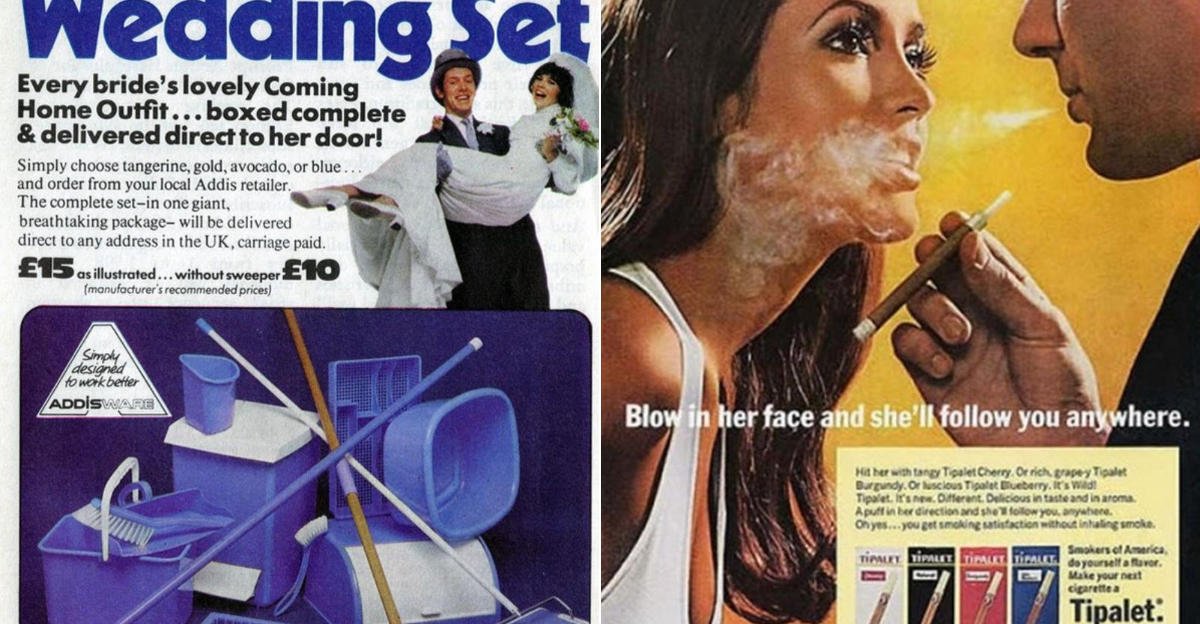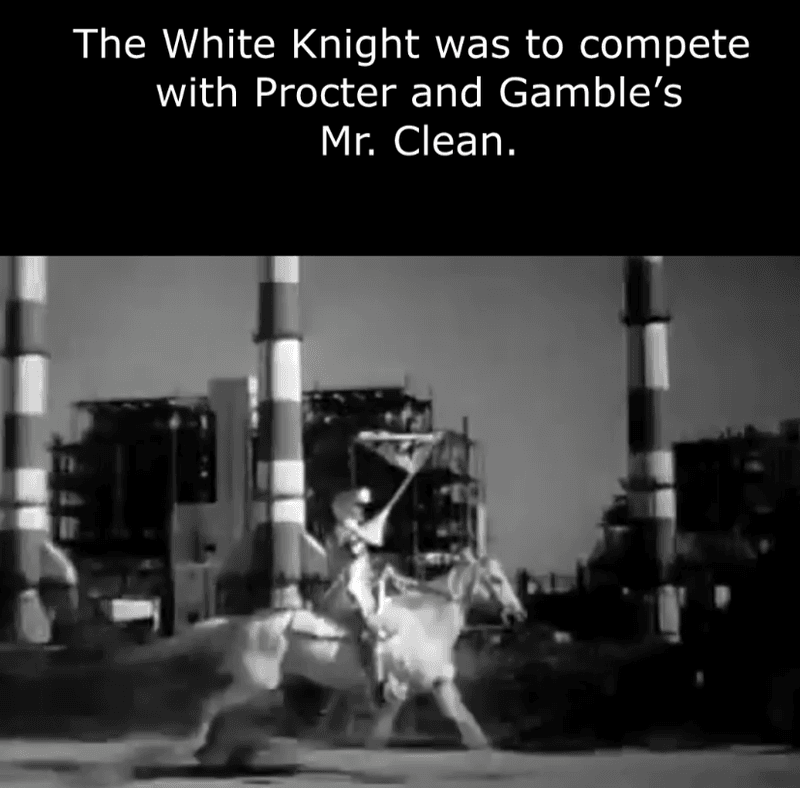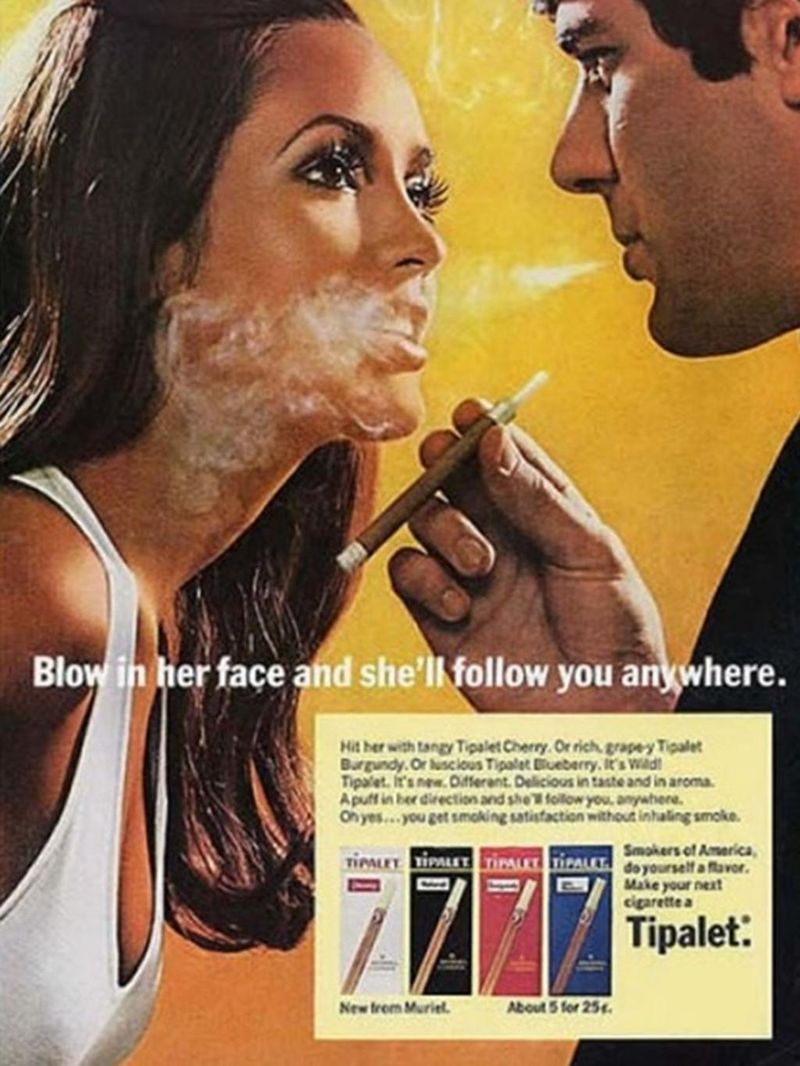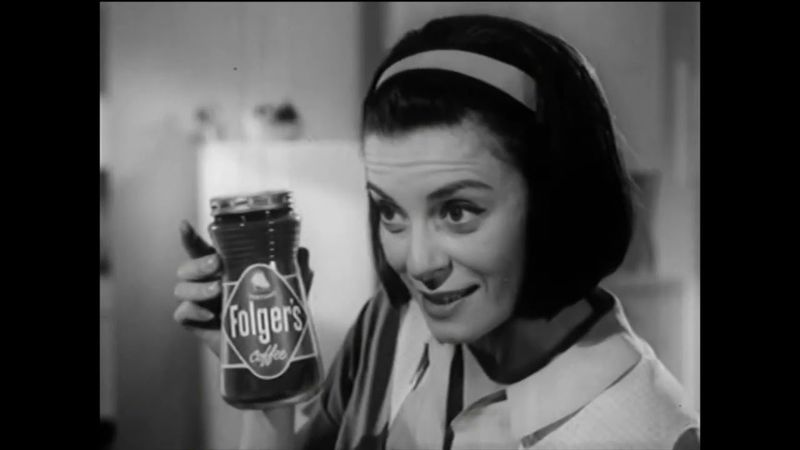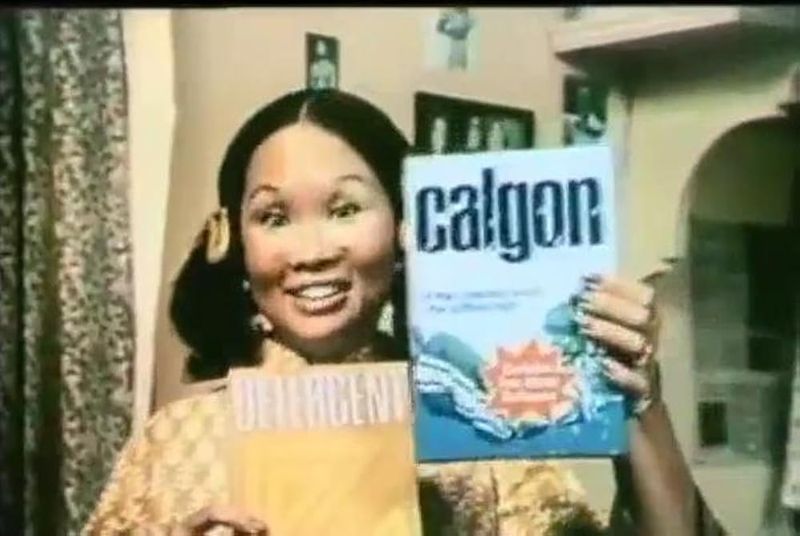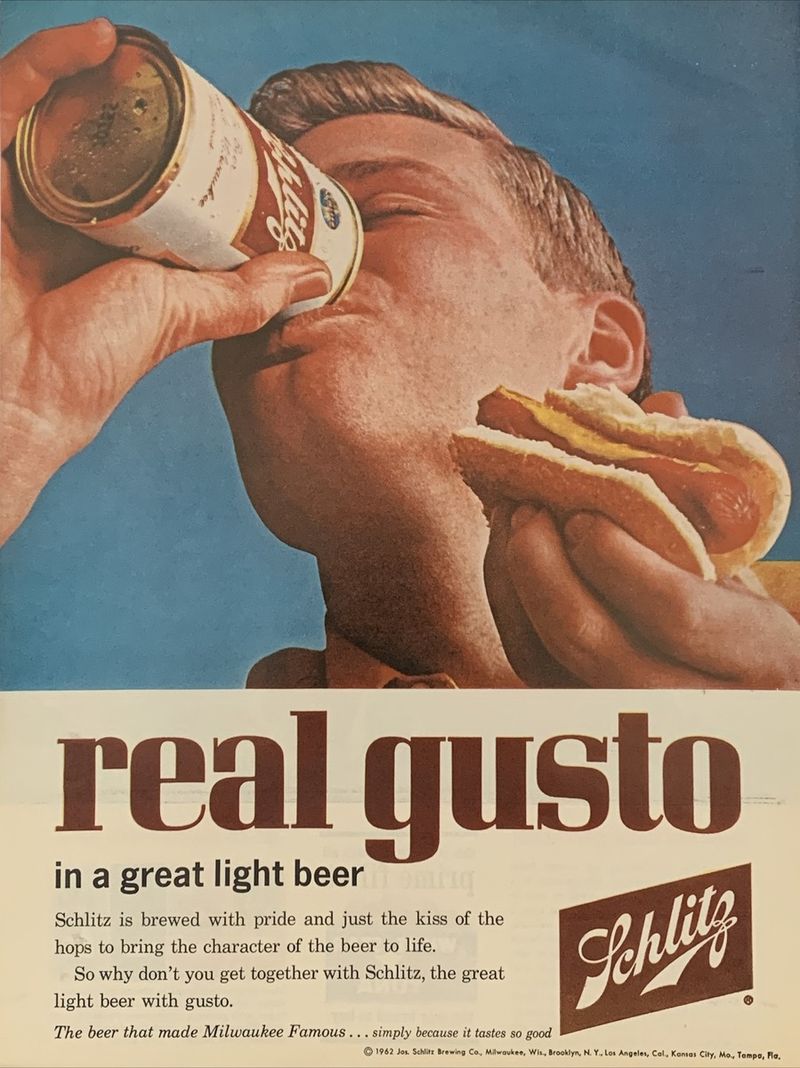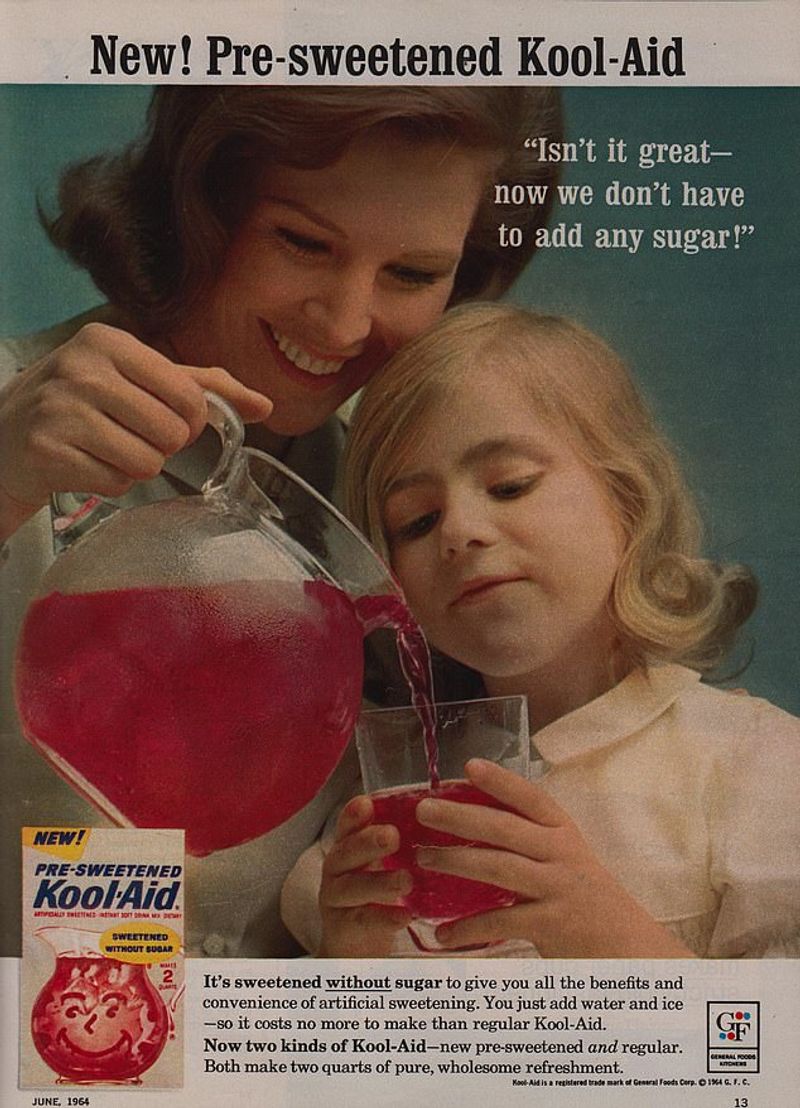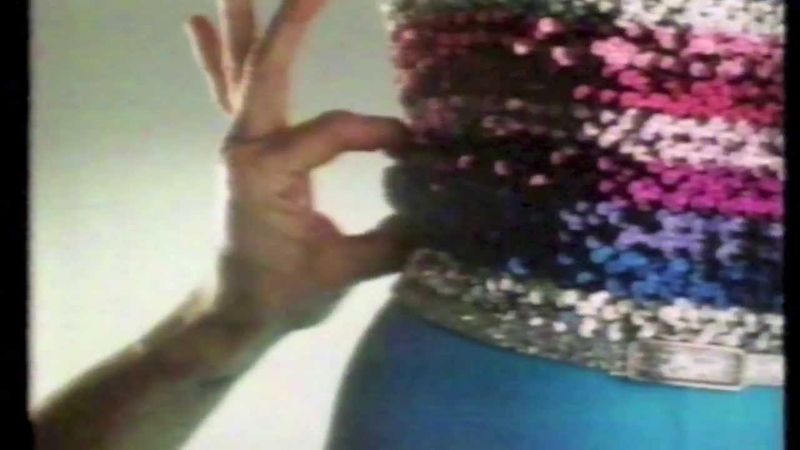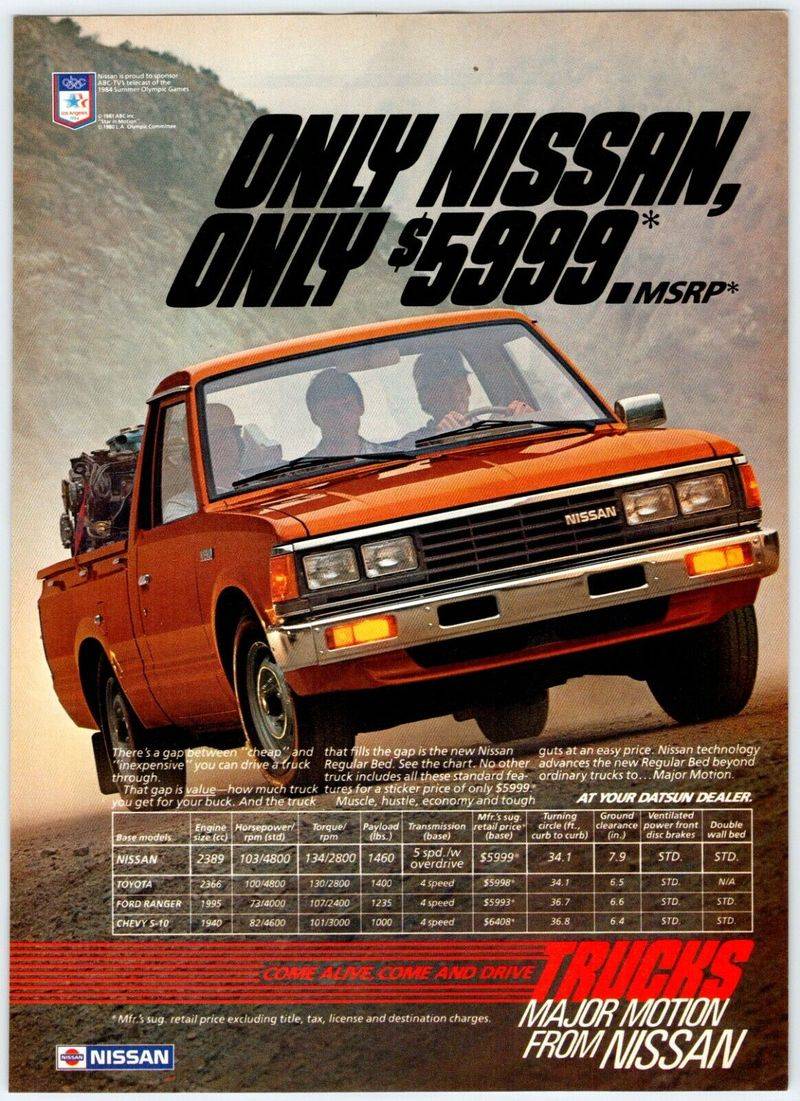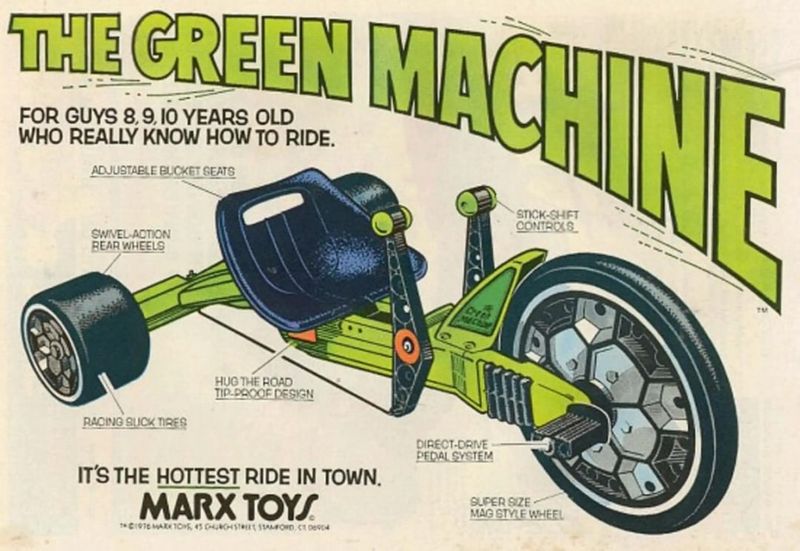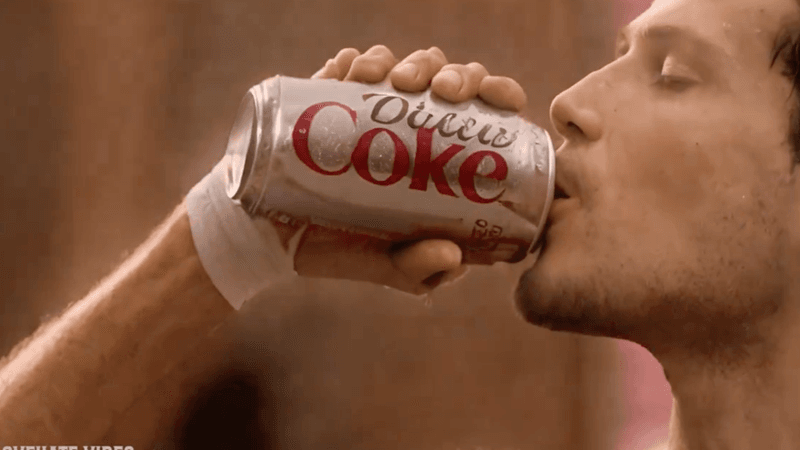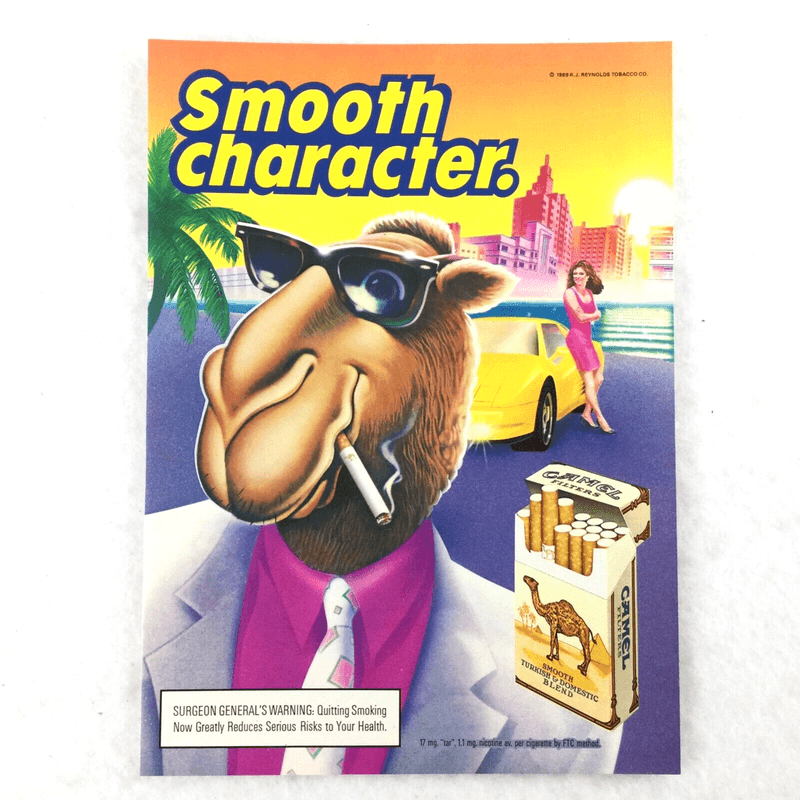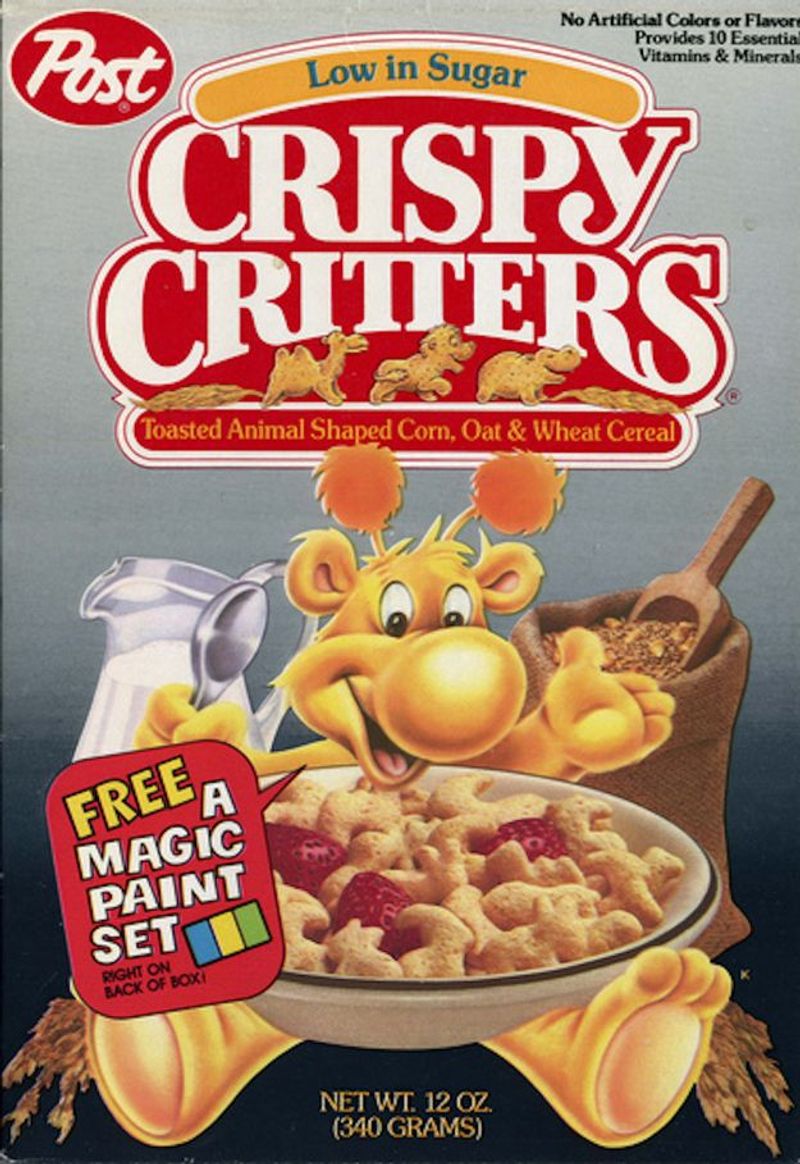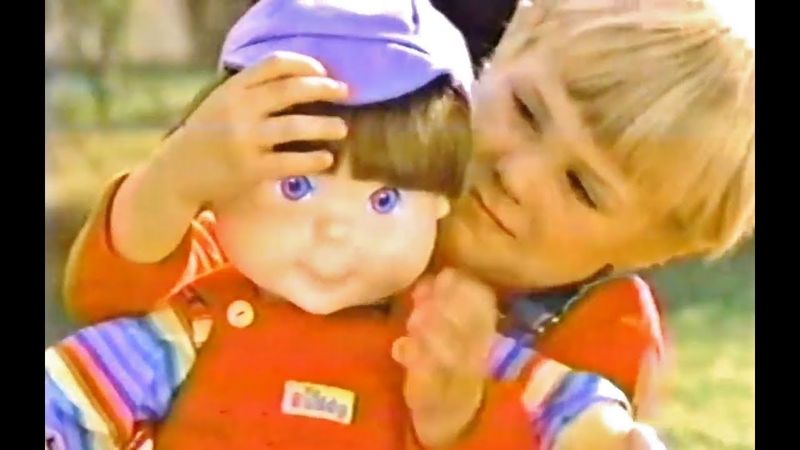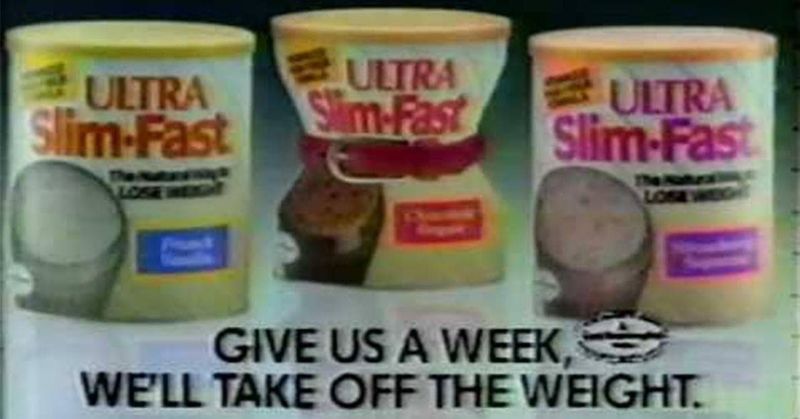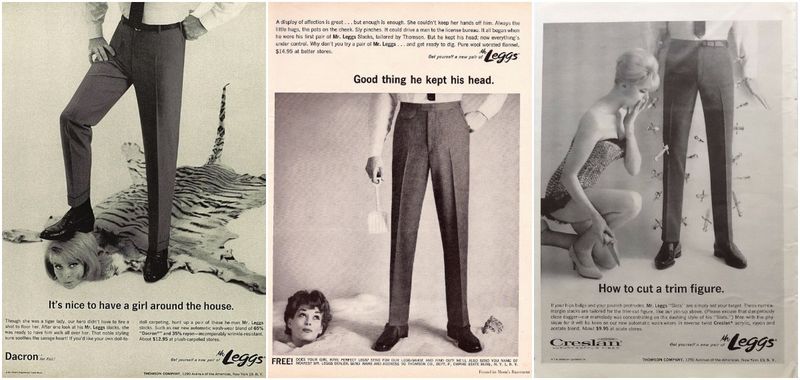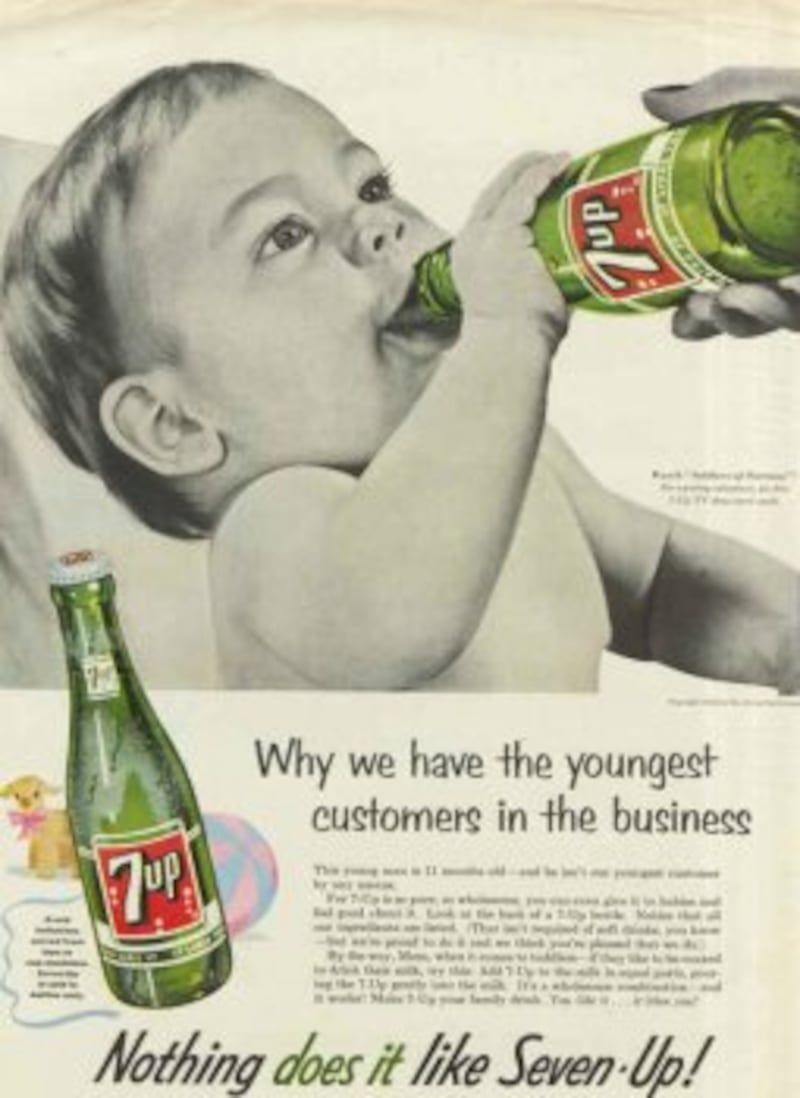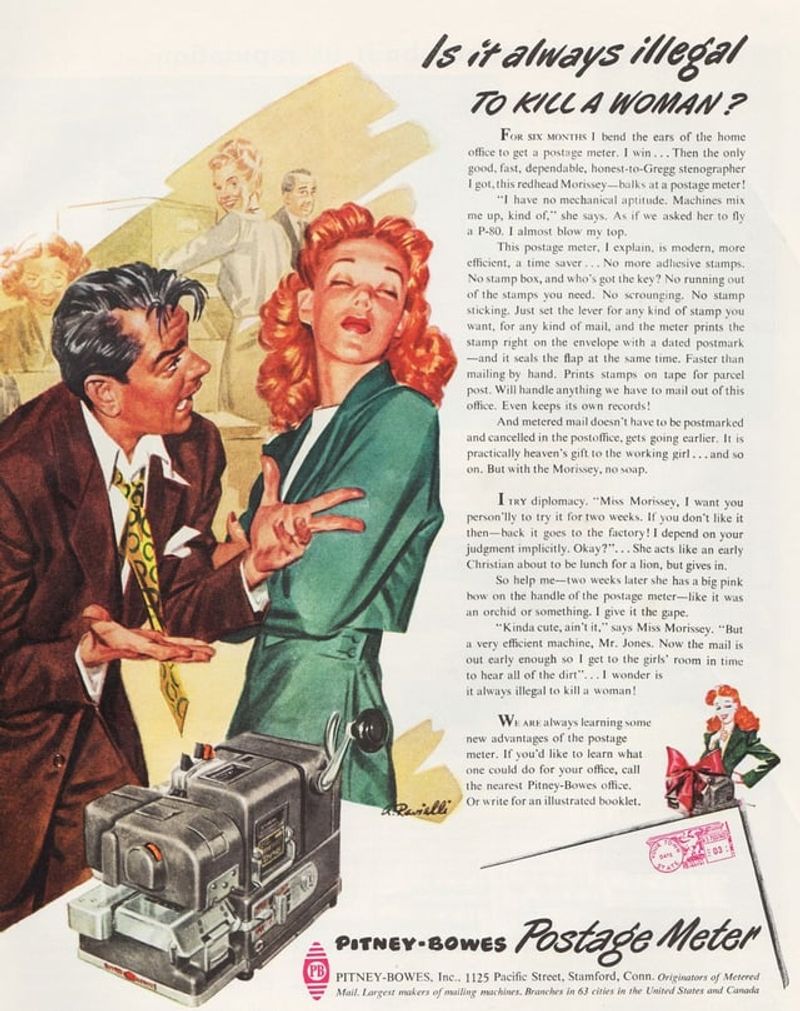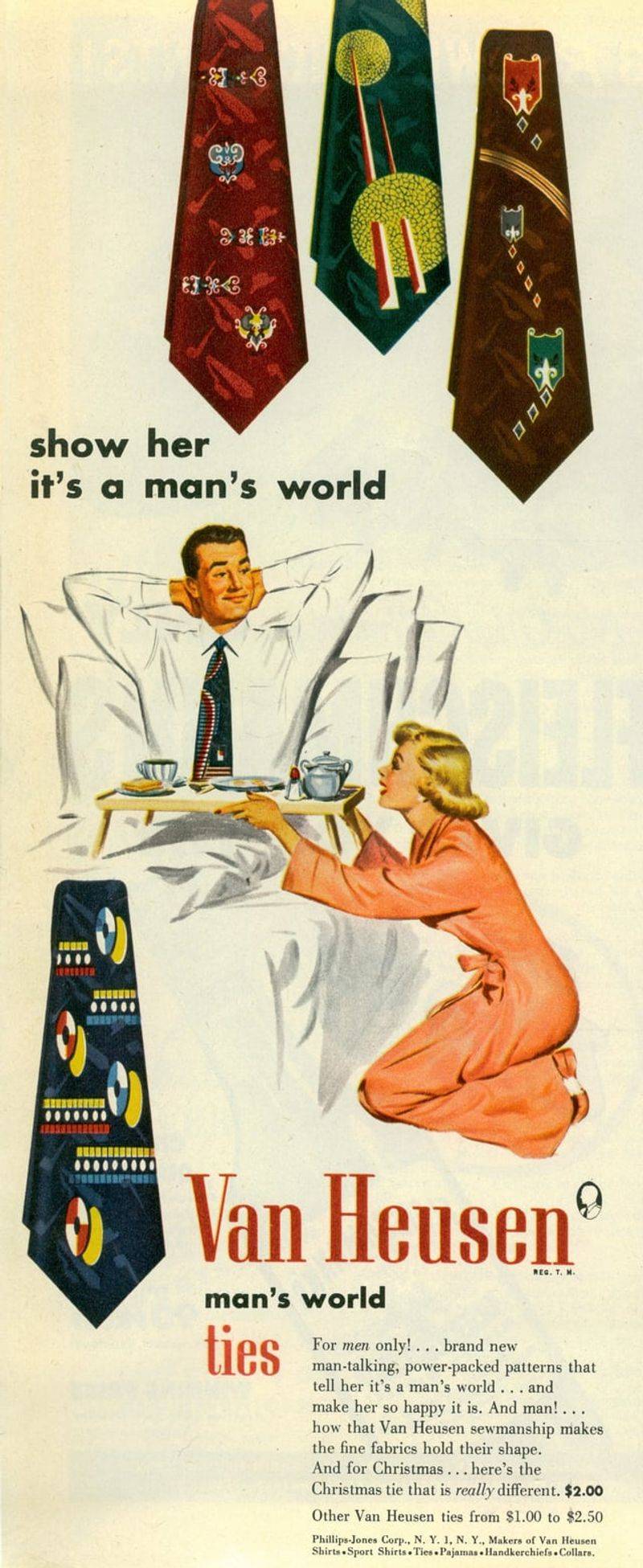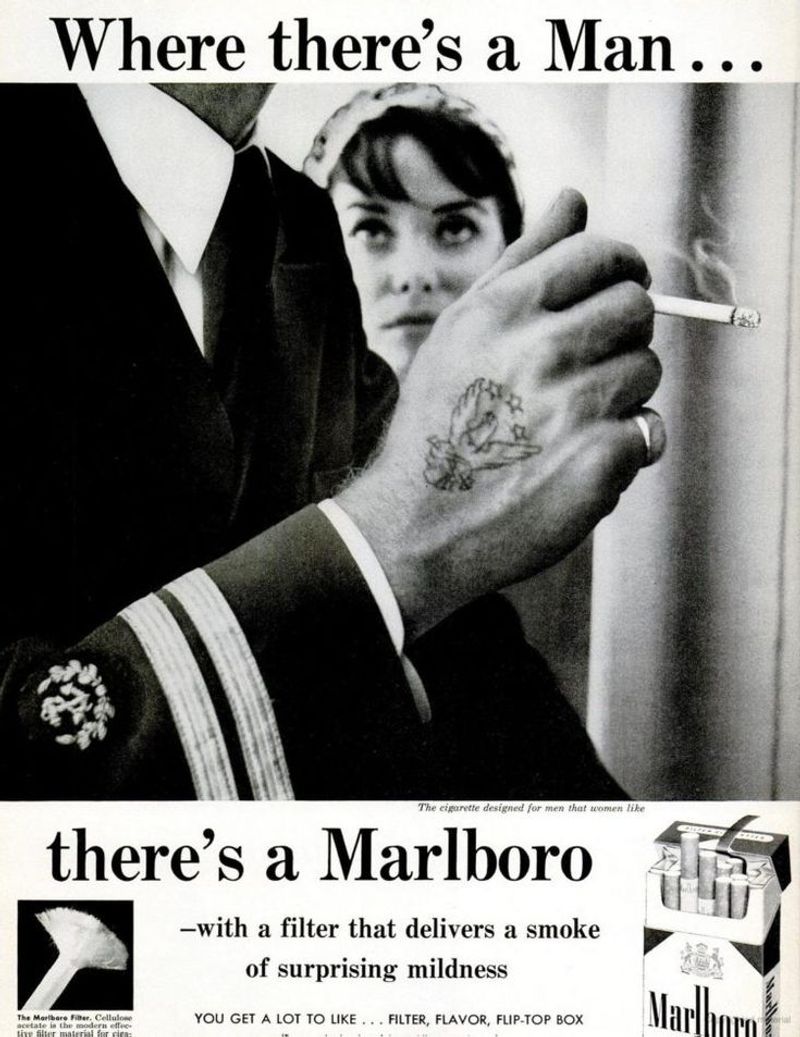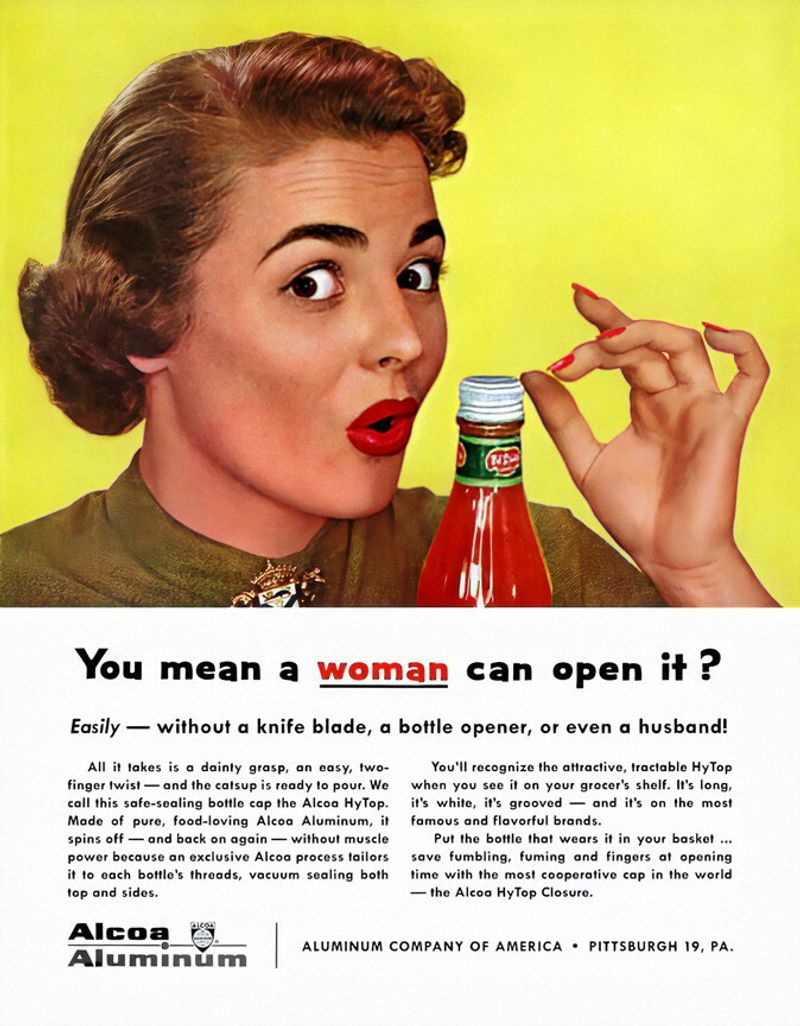Explore a curated list of advertisements from the ’70s and ’80s that would face bans today due to their outdated and often offensive themes. These ads reflect cultural norms and attitudes from the past that clash with current standards of sensitivity and fairness.
1. Ajax “White Knight” (1970s)
The Ajax “White Knight” ad from the 1970s showcases a medieval knight heroically rescuing women’s dirty laundry by striking them with his lance, symbolizing the product’s cleaning power. The visual metaphor of the knight saving the day reinforces traditional gender roles where men are active saviors and women passive beneficiaries. This ad promotes a narrative that aligns cleanliness with female domesticity, subtly implying that women need a man’s help even in household chores. Today, such a depiction would be criticized for its gender stereotyping and lack of agency for women.
2. Tipalet Cigarettes “Blow in Her Face” (1960s)
Tipalet’s 1960s ad campaign cynically urged men to charm women by blowing cigarette smoke into their faces, equating nicotine allure with romantic success. The scene depicted portrays a man confidently exhaling smoke towards a woman, who is depicted as irresistibly drawn to him. This advertisement not only objectifies women but also trivializes the health risks associated with smoking. With today’s understanding of tobacco’s dangers and the focus on consent and respect in interpersonal relationships, this ad would undoubtedly be deemed inappropriate and highly controversial.
3. Folgers Coffee “Wife” Campaign (1970s)
In the 1970s, Folgers targeted housewives with its “Wife” campaign, portraying them as failures if they couldn’t brew a strong cup of coffee. The ad often showed a tired housewife, anxiously awaiting her husband’s approval for her coffee-making skills. This portrayal reinforces the stereotype that a woman’s worth is tied to her domestic abilities, particularly in relation to pleasing her husband. In today’s world, such an ad would face backlash for perpetuating outdated gender roles and diminishing the diverse identities and capabilities of women beyond domestic confines.
4. Calgon “Ancient Chinese Secret” (1970s)
Calgon’s “Ancient Chinese Secret” ad from the 1970s depicts an Asian laundry owner who attributes the shop’s success to a mystical secret, implying cultural exoticism. The commercial feeds into Asian stereotypes by suggesting that superior results stem from cultural mystery rather than the actual detergent’s efficacy. This portrayal not only undermines the intelligence of consumers but also perpetuates harmful racial stereotypes. Modern advertising standards reject such racial insensitivity, focusing instead on highlighting product qualities without resorting to cultural misrepresentation.
5. Schlitz Beer “Gusto” (1970s)
Schlitz Beer’s “Gusto” campaign of the 1970s painted a picture of rugged masculinity, suggesting real men drink Schlitz to embody strength and confidence. The ads featured robust, outdoorsy men, bonding over beers, promoting the idea that masculinity is linked to drinking habits. This depiction not only reinforces toxic masculinity but also marginalizes those who don’t fit this narrow masculine model. Today, such ads would be criticized for promoting unhealthy gender norms and failing to recognize the diversity of male identities.
6. Kool-Aid “Sugar Shock” (1970s)
In the 1970s, Kool-Aid launched ads that targeted children with its sugary drinks, presenting them as fun and harmless. These ads often showed cheerful children enjoying their Kool-Aid, with bright visuals and catchy jingles. However, the focus on sugar dismissed the health risks associated with excessive sugar consumption, including obesity and dental issues. Today, with a greater awareness of the impact of diet on health, such marketing tactics would be seen as irresponsible and misleading, especially in targeting impressionable young audiences.
7. Special K “Pinch an Inch” (1980s)
The 1980s Special K “Pinch an Inch” campaign encouraged women to pinch their waists to determine if they needed to diet, promoting body dissatisfaction. The ad featured women self-assessing their need to lose weight by pinching their waistlines, aligning their self-worth with physical appearance. This message of body-shaming and unrealistic beauty standards perpetuates unhealthy relationships with food and body image. In today’s society, which values mental health and self-acceptance, such ads would be heavily criticized and unlikely to be aired.
8. Nissan Hardbody Trucks (1980s)
Nissan’s Hardbody Trucks ads from the 1980s suggested that a man’s worth and masculinity were tied to owning a rugged pickup. The campaign often depicted rugged men driving through challenging terrains, with women portrayed as admiring accessories, reinforcing traditional gender roles. Such imagery implies that material possessions define masculinity and appeal. Modern viewers would find these ads problematic as they promote a narrow view of gender identity and perpetuate stereotypes that link manhood with material success and dominance.
9. Wendy’s “Russian Fashion Show” (1980s)
Wendy’s “Russian Fashion Show” ad from the 1980s humorously mocked Soviet women by portraying them as unglamorous and humorless. The commercial juxtaposed drab Soviet clothing with the vibrant appeal of Wendy’s burgers, implying Western superiority. While intended to entertain, the ad employs crude cultural stereotyping and fails to appreciate the nuances of different cultures. In today’s globalized society, such depictions would likely be criticized for insensitivity and lack of respect towards cultural diversity, rather than focusing on the product itself.
10. Big Wheel Bicycle Ads (1980s)
The 1980s Big Wheel bicycle ads celebrated kids zipping around on these iconic toy trikes, showcasing their thrilling speed and maneuverability. These ads often depicted children racing at high speeds with little regard for safety gear, reflecting a carefree attitude towards child safety. Today’s standards, which prioritize child safety and protective equipment, would likely deem such portrayals as irresponsible. Emphasizing speed over safety would not resonate well with contemporary audiences, who are more aware of the potential risks involved.
11. Diet Coke “Construction Worker” (1980s)
Diet Coke’s “Construction Worker” ad from the 1980s reversed traditional objectification by portraying women ogling a shirtless man. The commercial depicted a group of female office workers taking a break to watch a muscular construction worker, turning the tables on typical gender roles. While some saw it as playful, others criticized it for perpetuating gender objectification, albeit in reverse. Modern audiences seek gender equality where neither gender is reduced to mere objects of visual pleasure, making such ads questionable today.
12. Joe Camel Cigarettes (1980s)
The Joe Camel campaign in the 1980s used a cartoon character to make smoking appealing to younger audiences. The character’s laid-back persona and cool attitude were designed to attract children and teens, blurring the line between adult choices and youthful curiosity. The campaign faced significant backlash for its blatant targeting of minors with a product known to cause addiction and health issues. Today, such advertising would be strictly regulated or banned outright due to its unethical approach and the serious health risks involved.
13. Crispy Critters Cereal (1980s)
Crispy Critters Cereal ads in the 1980s featured catchy jingles with fake tribal chants, aiming to attract children with its playful yet culturally insensitive theme. The animated commercials relied on caricatures and sounds that trivialized and appropriated indigenous cultures, presenting them as exotic and entertaining. In today’s culturally aware environment, such ads would face criticism for disrespecting cultural identities and perpetuating stereotypes. Current advertising practices emphasize cultural sensitivity and authenticity, steering away from using stereotypes as selling points.
14. My Buddy Doll (1980s)
The My Buddy Doll campaign of the 1980s marketed dolls specifically for boys who didn’t want “girly” toys, reinforcing rigid gender norms. The ads showcased boys engaging with these dolls in ways deemed acceptable by traditional masculine standards, emphasizing companionship and play without challenging gender expectations. Today, such marketing strategies are critiqued for their role in perpetuating stereotypes and limiting children’s freedom to choose toys that suit their interests, regardless of gender. Modern campaigns focus on inclusivity and freedom of expression.
15. Slim-Fast “Shake for Breakfast” (1980s)
Slim-Fast’s “Shake for Breakfast” campaign in the 1980s promoted meal-replacement shakes as the perfect solution for weight management, often ignoring the importance of balanced nutrition. The ads depicted individuals pouring shakes with promises of quick results, overlooking the psychological and nutritional aspects of healthy eating. This approach simplified complex health issues and promoted potentially harmful dieting practices. Today, a more holistic understanding of health would render such ads questionable, as they fail to address the importance of mental and physical well-being.
16. Coors Light “Not Just for Breakfast Anymore” (1980s)
Coors Light’s “Not Just for Breakfast Anymore” ad from the 1980s humorously suggested that beer could be enjoyed at any time of day. This playful take on casual day-drinking promoted a carefree lifestyle but overlooked the potential dangers of encouraging irresponsible alcohol consumption. The ad featured cheerful individuals enjoying Coors Light in various social settings, blurring the line between moderation and excess. Today, such messaging would be scrutinized for promoting unhealthy drinking habits, with modern regulations emphasizing responsible consumption and awareness.
17. Oreo “Moms Have It Hard” (1980s)
Oreo’s “Moms Have It Hard” campaign in the 1980s depicted mothers using cookies to manage their children, reinforcing traditional caregiving stereotypes. The ads showed overwhelmed mothers finding relief in pacifying their kids with Oreos, subtly implying that their primary role was in the domestic sphere. This portrayal limits the perception of motherhood to household management and overlooks the diverse roles women play in society. Today’s advertisements strive for gender equality and empowerment, making such narrow depictions less acceptable.
18. Mr Leggs Slacks (1970s Print Ad)
Mr Leggs Slacks print ads from the 1970s took objectification to an unsettling level by depicting a woman as a tiger-skin rug under a man’s feet. This imagery blatantly reduced women to decorative, submissive objects, reinforcing a power dynamic where men dominate. The ad’s unsettling visual metaphor sparked controversy even in its time for its demeaning portrayal of women. Such imagery would be condemned today for its sexism and lack of respect for women’s autonomy and dignity, aligning poorly with contemporary values of equality and respect.
19. Schlitz Beer “Don’t Worry Darling, You Didn’t Burn the Beer” (1960s)
The Schlitz Beer ad “Don’t Worry Darling, You Didn’t Burn the Beer” from the 1960s humorously portrayed a woman’s kitchen mishap as inconsequential as long as the beer was intact. It featured a relieved wife and a reassuring husband, trivializing women’s domestic roles and subtly mocking their efforts. This portrayal perpetuates sexist paternalism, suggesting women’s value lies in their household performance. In today’s world, where gender roles and expectations are more balanced, such ads would be criticized for undermining women’s contributions beyond domestic tasks.
20. 7-Up Baby Milk Ad (1950s)
The 7-Up Baby Milk ad from the 1950s astonishingly suggested adding soda to an infant’s formula, promoting dangerous health advice. The ad portrayed this practice as a modern convenience, with smiling mothers and healthy-looking babies, misleadingly implying benefits. Such a portrayal reflects a lack of understanding of nutrition and health, prioritizing product promotion over safety. In today’s health-conscious society, such ad would face legal and ethical challenges for endangering children’s well-being and providing scientifically unsound advice.
21. Pitney Bowes Postage Meter (1960s Print Ad)
Pitney Bowes’ 1960s print ad shockingly featured the headline, “Is it always illegal to kill a woman?” to grab attention, trivializing violence against women. The ad juxtaposed this disturbing question with the mundane efficiency of a postage meter, intending to capture attention through shock value. Such insensitivity to serious social issues reflects a bygone era of advertising where controversy was used to sell. Today, this ad would be considered appalling, promoting harmful narratives rather than meaningful dialogue, aligning poorly with contemporary values of dignity and respect.
22. Van Heusen “Man’s World” Ties (1951)
The Van Heusen “Man’s World” ties ad from 1951 boldly declared that their product was “for men only,” reinforcing exclusionary gender norms. The imagery typically showcased a confident man in a tie, with a woman admiring him, subtly implying her secondary role. This ad perpetuates a worldview where women are seen as supporters rather than equal participants. Today, such messaging would be rejected for its outdated perspective, as contemporary society values gender equality and the dismantling of stereotypes that limit personal expression.
23. Addis Wedding Set (1940s)
The Addis Wedding Set ad from the 1940s instructed brides that their role was to adeptly manage household chores, reinforcing oppressive gender roles. The imagery typically showed an enthusiastic bride equipped with the Addis Wedding Set, symbolizing her domestic responsibilities. This portrayal aligns women’s identities with homemaking, ignoring their aspirations beyond the domestic sphere. In today’s context, where gender roles are more fluid and diverse, such ads would face criticism for limiting women’s potential and failing to recognize the breadth of their contributions.
24. Marlboro “Where There’s a Man… There’s Marlboro” (1970)
Marlboro’s 1970 campaign, “Where There’s a Man… There’s Marlboro,” glamourized smoking as a masculine rite of passage. The ads depicted rugged cowboys, symbolizing strength and independence, while downplaying the health risks associated with smoking. This imagery not only romanticized tobacco use but also linked masculinity with harmful habits. Today, advertising focusing on health and well-being would challenge such portrayals, emphasizing the importance of making informed, healthy lifestyle choices rather than adhering to outdated and harmful stereotypes.
25. Alcoa Aluminum “You Mean a Woman Can Open It?” (1953)
The Alcoa Aluminum ad from 1953 patronized women by implying that opening jars was a man’s task until Alcoa’s easy-open packaging came along. The ad showed a smiling woman expressing surprise at her newfound ability to open a package, subtly reinforcing gender stereotypes about women’s capabilities. This portrayal undermines women’s competence, relegating them to needing assistance for simple tasks. Modern advertising rejects such patronizing narratives, focusing instead on empowerment and equality, where capability isn’t defined by gender stereotypes but by individual abilities.
